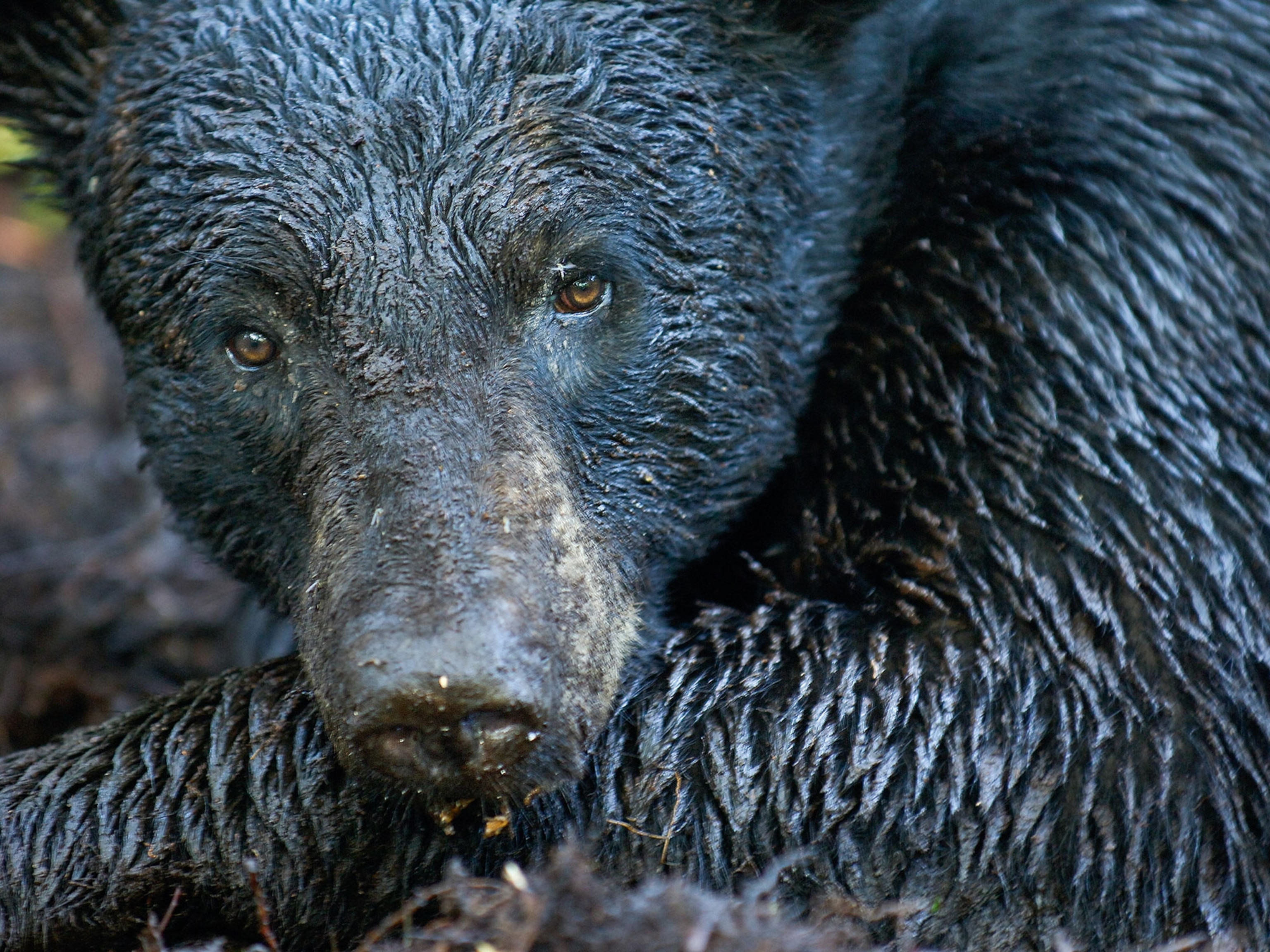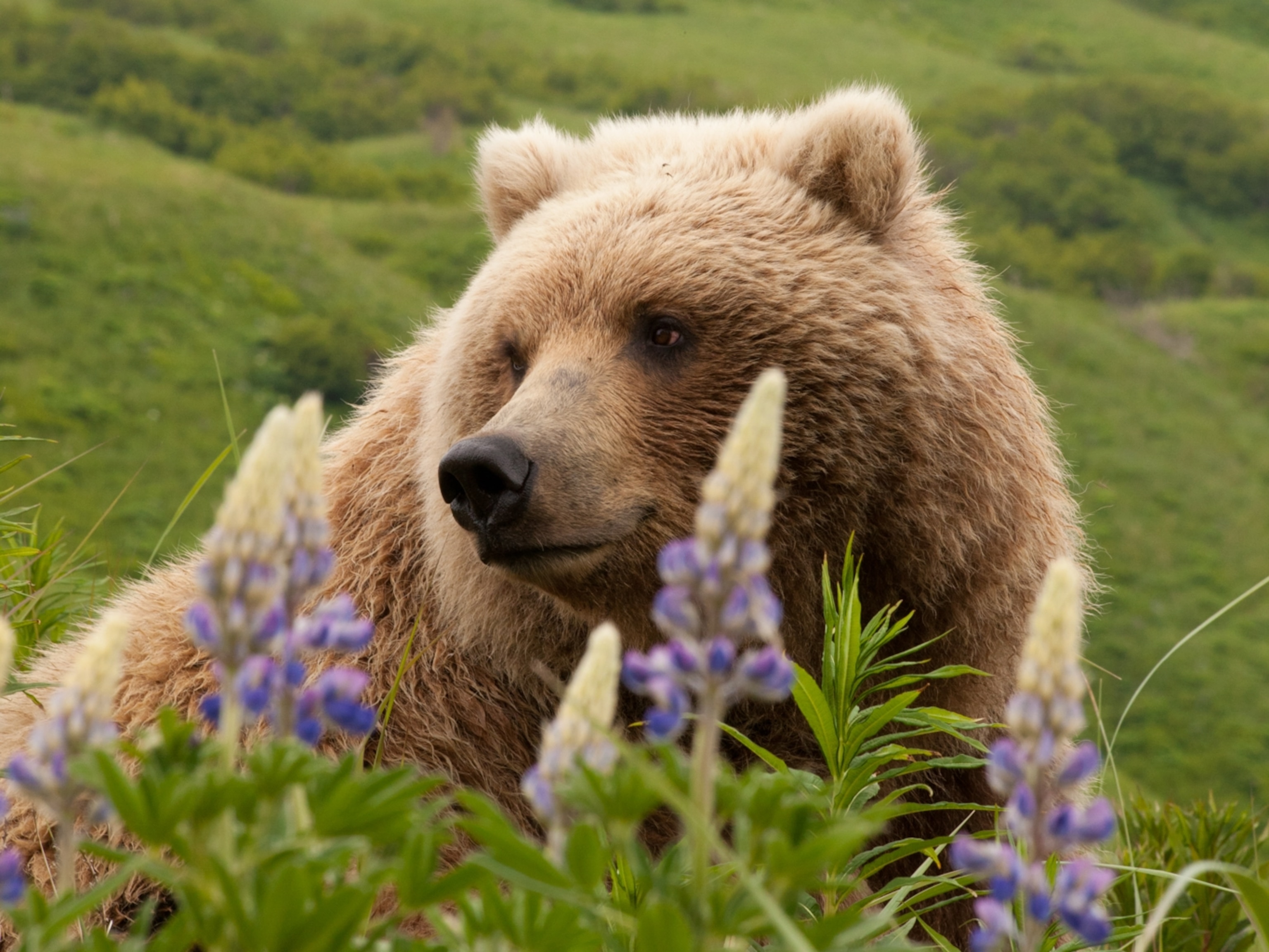
Hibernating Bears Keep Weirdly Warm
"Amazing" adaptation allows bears to stay fit during winter.
Hibernating black bears can dramatically lower their metabolism with only a moderate drop in body temperature, a surprising new study says.
The North American mammals generally slumber about five to seven months without eating, drinking, urinating, or defecating, and then emerge from their dens in the spring none the worse for wear.
Scientists have long known that to survive this lengthy fast, the bears drop their metabolism, the chemical process that converts food to energy.
But it was thought that, like most animals, the bears would have to drop their body temperatures to put the brakes on metabolism—each 18-degree Fahrenheit (10-degree Celsius) drop in temperature should equal a 50-percent reduction in the chemical activity.
Not so, according to the new study. A black bear in Alaska can lower its temperature—generally about 91 degrees Fahrenheit (33 degrees Celsius)—by only about 9 to 11 degrees Fahrenheit (5 or 6 degrees Celsius), yet bring its metabolism almost to a grinding halt, at 25 percent of the normal rate.
(See "Pythons Grow Bigger Hearts at Mealtimes.")
The scientists also recorded that the bears' heart rates dropped from 55 to 9 beats a minute. During intervals when the bears were not breathing, there were also as many as 20 seconds between beats. That's because when metabolism slows, so does the need for the heart to pump oxygen through the body.
"If we had that kind of longer interval within our heartbeats, we would probably faint," said study co-author Øivind Tøien, a zoophysiologist at the University of Alaska, Fairbanks.
Black Bear Metabolism Another "Amazing" Feat
For the study, Tøien and colleagues rescued four "nuisance" bears that had been recently captured by the Alaska Department of Fish and Game. Such bears, which live too close to people, are usually euthanized.
The scientists fitted the bears with various devices to record their temperatures, heartbeats, and other factors before placing the animals into artificial dens. The dens were located in an undisturbed forest near Fairbanks that mimicked the animals' natural habitats.
(Read more about how Tøien worked with bears on the National Geographic News Watch blog.)
How the bear's body can create the unexpected drop in metabolism is still poorly understood, but Tøien has a few theories. For instance, bears could be like marmots, a hibernating mammal that regulates metabolism by shrinking the mass of its digestive system and then bulking back up when spring comes.
(See "Warming Creating Extinction Risks for Hibernators.")
In general, the bear's uncoupling of metabolism from temperature "is yet another amazing thing that black bears can do," noted Bryan Rourke, a biologist at California State University, Long Beach, who has studied how bears' hearts can withstand hibernation.
Rourke also pointed to the new study's finding that bears can regulate their temperatures to suit individual needs. (See bear pictures.)
For instance, a pregnant female black bear in the study did not allow her body temperature to fluctuate as much as other hibernating bears, presumably to protect the fetus.
Bear Study May Help Humans
Both scientists emphasized that the bear research—published tomorrow in the journal Science—could offer practical applications for humans.
"A lot of what hibernating mammals can accomplish addresses ways that maybe we could treat things like muscle disease or heart disease," Rourke said.
For instance, understanding how bears can survive with such low amounts of oxygen may help stroke victims who temporarily lose oxygen flow to the brain.
Or, unlocking how bears can control their metabolism without dropping their temperatures may provide clues to how people can lose weight.
"Nearly every organ system in the hibernating mammal," Rourke said, "demonstrates some fascinating but contrasting physiology to humans."





